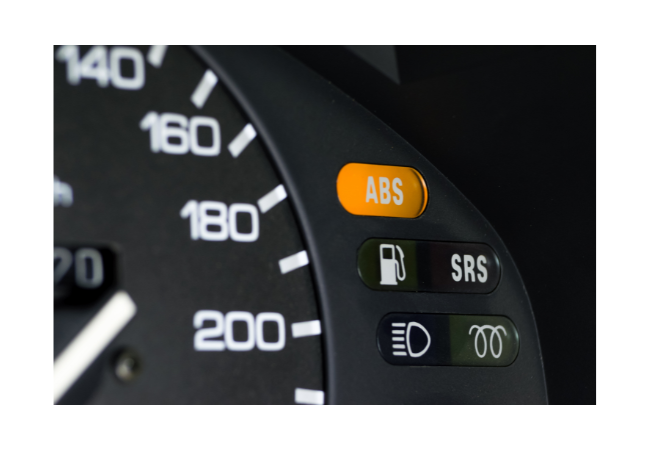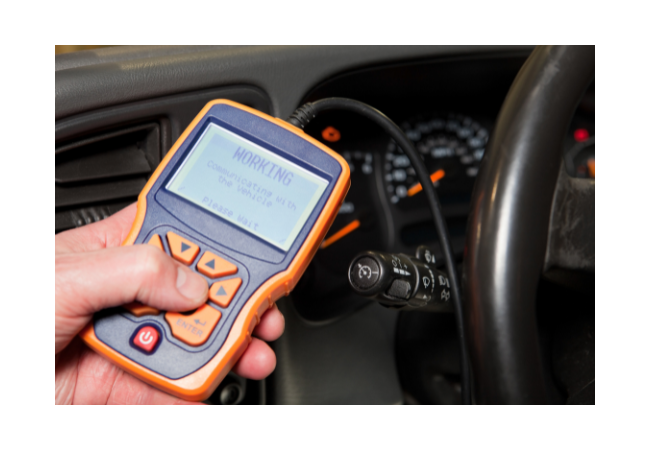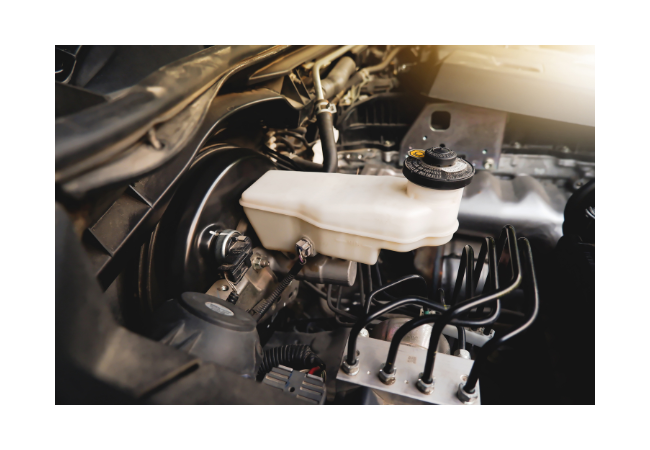Imagine driving down the road in your 2003 Chevy Silverado when suddenly, the ABS light on your dashboard illuminates. Panic sets in as you wonder what could be wrong and whether it’s safe to continue driving. Fear not, fellow Silverado owners, as we have compiled a comprehensive guide on how to reset ABS light on 2003 Chevy Silverado, to help you diagnose, reset, and address the underlying issues causing your ABS light to activate. By following these steps and adopting preventive measures, you can restore the safety and functionality of your vehicle’s braking system and hit the road with confidence.
Contents
Key Takeaways
- Understanding the ABS system and common triggers for activation is essential to vehicle safety.
- Diagnosing the problem involves using an OBD2 scanner or a visual inspection of components, followed by resetting the light with either method.
- Regular maintenance and safe driving habits can help protect against future activations.
Understanding the ABS Light on Your 2003 Chevy Silverado

The ABS light, also known as a warning light, is a safety feature on your 2003 Chevy Silverado that indicates a problem with the Anti-lock Braking System (ABS). This essential component prevents the wheels from locking up during braking, maintaining vehicle safety and control.
Prompt attention is necessary when the ABS light is activated, more so if the check engine light is also on. The subsequent details focus on the function of the ABS system and the usual triggers for ABS light activation.
The Role of the ABS System
The Anti-lock Braking System (ABS) is designed to assist in maintaining vehicle control and steering during hard braking, promoting overall safety. The ABS light is activated by the anti-lock fuse and relay, signaling a problem in the system.
The ABS pump, or Hydraulic Control Unit (HCU), is a key element of the ABS system. It activates the valves to decrease hydraulic pressure to the brakes when wheel lock occurs during high-speed braking. Vehicle safety depends on the ABS system’s proper functioning, which includes maintaining the brake fluid level and keeping the positive cable connected.
Common Causes for ABS Light Activation
Several factors can lead to the activation of the ABS light, such as:
- Faulty wheel speed sensors
- Low brake fluid
- A blown fuse or bad relay
- Low tire pressure
- A defective ABS module
- Worn-out or uneven tires
Inspecting the wheels, tires, and new hubs for any damage or loose connections at the ABS speed sensor connector block is a necessary step.
Replacing wheel speed sensors is a common solution for ABS light activation. The cost of this replacement typically ranges from $200 to $400 per sensor, and they should generally be replaced every 30,000 to 50,000 miles. To ensure each sensor tip is clean and free of rust or dirt, follow these steps:
- Remove the sensor from each wheel hub.
- Clean the sensor tip thoroughly, making sure it is free of any rust or dirt.
- Reinstall the sensor back into the wheel hub.
Another potential cause of ABS light activation is low brake fluid. Worn brake pads, worn rotors, or a leak in the system can all lead to decreased brake fluid levels. If the ABS light and brake light both illuminate, it is advised to stop driving immediately due to the potential for brake failure.
Diagnosing the Problem

Now that we understand the potential causes for ABS light activation, it’s time to diagnose the issue. Two primary methods can be employed: using an OBD2 scanner to retrieve error codes and visually inspecting the ABS components for any damage.
Correct diagnosis of the problem allows you to address the underlying cause and restore your vehicle’s braking system’s safety and functionality.
Using an OBD2 Scanner
An OBD2 scanner is a useful tool for diagnosing issues with the ABS system by retrieving error codes. To connect an OBD2 scanner to your vehicle, locate the diagnostic link connector (DLC) beneath the dashboard of your 2003 Chevy Silverado and plug the scanner into the port.
Enter the make, model, and year of your vehicle into the scanner, and read the error codes to identify any issues with the ABS system. Interpreting the codes allows you to identify the malfunctioning ABS component and take steps to rectify the problem.
Visual Inspection
A visual inspection of the ABS components can also help diagnose the issue. Inspect the brake pads for signs of wear, check for leaking brake fluid, and look for damaged wiring. You can find helpful videos on YouTube that demonstrate how to visually inspect ABS components.
Assessing the ABS system’s physical condition helps identify visible damage signs and establish steps to rectify the issue.
Resetting the ABS Light
Once the underlying issue has been diagnosed and addressed, the next step is to reset the ABS light. There are two methods to accomplish this: using an OBD2 scanner to clear the error codes or disconnecting the battery to drain residual electricity.
Both methods are effective in resetting the ABS light, provided there are no other issues with the ABS system.
OBD2 Scanner Method
To reset the ABS light using an OBD2 scanner, follow these steps:
- Connect the scanner to your vehicle’s OBD2 port.
- Follow the instructions displayed on the device to access the ABS system.
- Clear the error codes to reset the ABS light.
- Verify the resolution of the issue by checking if the ABS light remains off.
The ABS light may remain illuminated after a reset. In this case, the ABS sensor could need to be replaced.
Battery Disconnect Method
The battery disconnect method involves disconnecting the negative terminal of the battery and waiting for approximately 15-20 minutes. This process drains residual electricity and resets the ABS light.
After reconnecting the battery, start the engine and check if the ABS light is no longer illuminated. If the light remains on, consider using an OBD2 scanner to diagnose the issue further or consult a professional mechanic for assistance.
Addressing the Underlying Issue
Addressing the root cause of the ABS light activation is vital to uphold the safety and functionality of your vehicle’s braking system. This may involve replacing faulty sensors, topping up brake fluid, or repairing or replacing damaged ABS components.
Identifying and rectifying the underlying issue can prevent future ABS light activations and uphold your vehicle’s safety.
Replacing Faulty Sensors
To replace a faulty wheel speed sensor or damaged wiring, follow these steps:
- Locate the malfunctioning sensor using an OBDII scanner to read the error code.
- Disconnect the malfunctioning sensor by disengaging the wiring harness.
- Install the new sensor by connecting the wiring harness to the new sensor.
Test the new sensor using an OBDII scanner to ensure it is functioning correctly and the ABS light no longer activates.
Topping Up Brake Fluid
To maintain optimal brake fluid levels, locate the brake fluid reservoir, typically located close to the brake master cylinder. Remove the cap and fill the reservoir with the specified type of brake fluid, ensuring not exceed the fill line.
Check for any leaks by inspecting the area underneath the vehicle for wet spots or puddles of brake fluid. Test the brakes by driving the vehicle in a safe area and applying the brakes gently. If the brakes are functioning correctly, the vehicle should stop smoothly.
Repairing or Replacing ABS Components
If an ABS component is damaged, warning lights may appear on the dashboard, a grinding noise may be heard when brakes are applied, and a decrease in braking power may be experienced. Use an OBD2 scanner or visually inspect the ABS system to identify the damaged component.
Depending on the extent of damage, certain components, such as the ABS pump, can be repaired, while others, like the ABS control module, may require replacement. To replace a damaged ABS component, disconnect the battery, remove the old component, and install the new one.
Test the ABS system by turning on the ignition and pressing the brake pedal; if the ABS light does not activate, the system is functioning correctly.
Preventive Measures

Implementing preventive measures such as regular vehicle maintenance and safe driving habits is essential to track outages and protect the ABS system, preventing future ABS light activations.
By following these guidelines, you can ensure the longevity of your ABS system and avoid unnecessary repairs or replacements.
Regular Maintenance
Regular vehicle maintenance is crucial to prevent breakdowns, identify potential issues in a timely manner, and ensure that all components remain in optimal working condition. This includes tasks such as brake system inspections, tire pressure checks, and maintaining proper brake fluid levels.
Performing regular maintenance decreases the likelihood of future ABS light activations and helps maintain your vehicle’s safety.
Driving Habits
Adopting safe driving habits can help prevent unnecessary wear and tear on the ABS system, depending on your settings. Examples of safe driving habits include avoiding sudden stops and starts, avoiding hard turns, and avoiding driving on uneven surfaces. By doing so, you can also ensure a smoother experience with personalized content and ads related to safe driving and protect yourself from spam fraud and abuse in the automotive industry. To enhance this experience, we use cookies and data to provide relevant information.
Safe driving reduces wear and tear on the ABS system, thus minimizing the need for unnecessary repairs or replacements. Implementing these practices will not only help maintain your ABS system, but also contribute to your overall vehicle safety.
Summary – How to Reset ABS Light on 2003 Chevy Silverado
In conclusion, understanding the ABS light’s function and importance, diagnosing the problem, resetting the light, and addressing the underlying issue are all essential steps in maintaining the safety and functionality of your 2003 Chevy Silverado’s braking system. By implementing preventive measures such as regular maintenance and safe driving habits, you can avoid future ABS light activations and ensure your vehicle’s longevity.
Remember, your vehicle’s braking system is a critical safety feature; taking the time to address any ABS light activations promptly and thoroughly is an investment in your safety and the safety of those around you. Stay proactive, stay informed, and stay safe on the road.
Frequently Asked Questions
How do I clear my ABS light without a scanner?
To reset your ABS light without a scanner, turn your car’s ignition key on and off several times while it’s in park or neutral with the parking brake on.
When you turn the ignition key to the “On” position without starting the engine, the ABS light should come on briefly and then turn off.
Why does the ABS light stay on in my Chevy?
The ABS light staying on in a Chevy can indicate a range of issues such as a blown fuse, malfunctioning wheel speed sensors, low levels of brake fluid, or even the system being turned off.
It is usually best to have the issue checked and fixed by a professional.
Why is my ABS brake light and traction control light on?
It is likely that the ABS and Traction Control lights have come on due to a malfunction, faulty wheel sensor, brake system issue, or low brake fluid.
You should take your vehicle in for servicing to make sure these issues are addressed appropriately.
Will pulling ABS fuse turn off light?
Removing the ABS fuse may lead to the dashboard’s indicator light staying lit, even if the system isn’t active.
How do I diagnose the cause of the ABS light activation?
To diagnose the cause of ABS light activation, an OBD2 scanner can be used to retrieve error codes, and any damage to the ABS components should be visually inspected.
